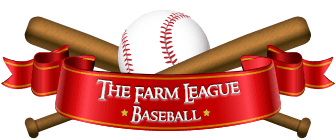March 2006. PRACTICE
By Cal Ripken, Jr. My dad, Cal Ripken, Sr., used to say, "Practice doesn't make perfect. Perfect practice makes perfect." He also used to say that baseball is a simple game. I grew up living and believing those sentiments, and I still do to this day. When working with kids, however, I have another philosophy that I preach in addition to those of my father: Make it fun! With a little creativity, there is no reason that baseball practice can't be almost as fun - or even more fun - than games. If you take away the strategies and team fundamentals and then look at even the most complex plays in baseball, they can be broken down into very simple parts. A double play, for instance, is nothing more than someone fielding a groundball and throwing it to a teammate who catches it and throws it to another teammate who catches it. In its simplest terms a double play is no more than a catch, a throw, a catch, a throw and a catch. Simple, right? It is if a solid fundamental base has been developed. So, there's no denying the need for fundamental development when we are working with baseball players at any level. What's that you say? Fundamentals are boring? They don't have to be. We do fundamental station and drill work every morning at our camps in four basic areas -- pitching, hitting, infield and outfield - and the kids have a ball. We make every kid go through each station because all players need to learn proper throwing mechanics (covered in the pitching station); all players need to learn how to field a groundball properly (infield station); all young players love to hit, which is the most technical part of the game (hitting station); and everyone on a baseball field, at some point, must catch a flyball or pop-up and learn to communicate effectively (outfield station). At first kids ask us why they have to go through all the stations. Even as 8-year-olds they often see themselves as pitchers, shortstops or center fielders. Another of our philosophies is to be able to explain why. There is solid reasoning behind everything we teach on the baseball field. Most times, when you can explain why, it gives you instant credibility as a coach and kids are happy to perform the tasks once they understand the spirit behind them. Once we have that out of the way, the fun begins. In our five years of running camps we have found that our methods of fundamental teaching are fun and allow for dramatic improvement even in a weeklong camp. The basic principles are: Put the kids in small groups so they get plenty of individual attention, understand their attention spans and move them to different stations after short periods of instruction and drills, and keep them active to avoid having players stand around for long periods of time. We also have found that these methods translate well when it comes to practice. Many volunteers don't have the luxury of a full staff of assistants like we do at camp, but usually there are parents around to help. One solution is for the head coach to hold a preseason meeting to ask if one or two parents can help out at each practice. Parents can rotate throughout the season so assisting at practice does not become a burden. Practices should be geared toward a particular age group's attention span. The youngest players should not practice for more than an hour. High school players should probably be limited to approximately two hours. Again, break the players into groups and rotate them among different stations: batting practice, baserunning, ground balls, fly balls, throwing, etc. Sometimes stations can be combined. For instance, one group can be hitting while another is working on baserunning and another is shagging hit balls. The group that is shagging can also be hit groundballs and flyballs between pitches. For older teams, if there are strategies or team fundamentals that need to be addressed, that can be accomplished together as a team, keeping in mind that kids' attention spans vary. At some point, if they are not getting it, move on and come back to it later. Creativity is another key to keeping practice fun. Come up with creative ways to teach the fundamentals that we talk about in our newsletter, on our website and in our instructional products (books and CD-Roms available at www.ripkenbaseball.com). In fact, we would like to add to our own drill book. On the Coach's Clipboard portion of our website (www.ripkenbaseball.com/cc), there is an area under the "Clipboard" section (accessed from the right navigation bar) that includes interactive tips. Here you can read tips from us or send us your own ideas. You also can email your drills and ideas to us (newsletter@ripkenbaseball.com). We will be compiling an online database of drills that fit within our teaching model. Remember, there are only so many drills. For kids, practicing the same drills over and over can become boring and tedious. We have found, however, that taking those same drills an introducing an element of competition increases the focus and enjoyment for the kids. Turn the drills into contests and award prizes to the winners. Keep in mind that competition drives all of us. Please use the tools and resources you will find here, along with your own creativity, to make the game fun for you, your kids or your team . |

